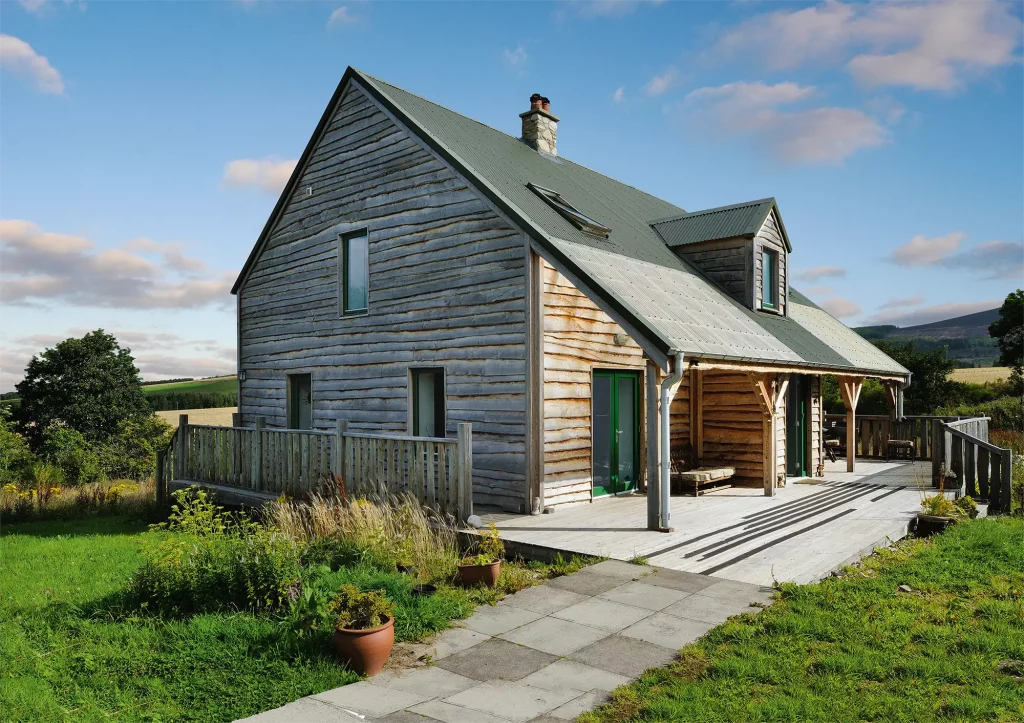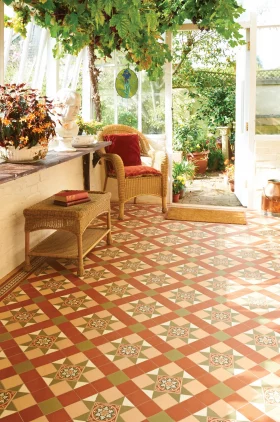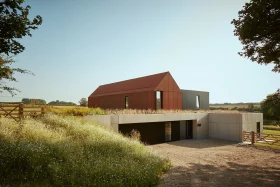

We’re getting better and better at constructing buildings which have low energy demand when in use (operational energy). As we do, the importance of the embodied energy consumed during construction becomes relatively more important to a project’s sustainability credentials.
So, in this article I’m going to explore what embodied energy and embodied carbon are, why they matter in UK home building, how they’re measured and what we can do to minimise these aspects of the environmental impact of our new housing.
Put simply, embodied energy is the energy used in the production, transportation and installation of building materials. The term embodied carbon translates this into carbon dioxide (CO2), the most common greenhouse gas.
Different fuels have different CO2 components, so a building material that’s largely manufactured using electricity will have a different carbon footprint (per unit of energy) to one produced using coal or gas.
Where an industrial process emits other greenhouses gases – methane (CH4), nitrous oxide (N2O) etc – these are converted into their carbon dioxide equivalent, identified as CO2e.

Kim Sui opted for a timber frame structure, straw bale insulation and locally grown larch cladding; a sustainable approach that also helped the new home blend into its surroundings. Photo: Nigel Rigden
Common materials that have high embodied energy include:
Concrete often accounts for a relatively high proportion of a building’s total embodied energy. That’s simply because so much of it is commonly used to construct foundations, walling, floor screeds, pointing and the like.
Plastic insulation materials such as polyurethane and polystyrene also take a lot of energy to produce.

As the efficiency of newly built homes increases, the embodied energy impact of construction, maintenance over time and demolition becomes relatively larger compared to the operational energy during the in-use phase
Materials that have a low embodied energy include sustainably-sourced timber and natural insulation materials, such as cellulose or sheepswool
In fact anything which requires only minimal processing can be low-impact. The natural slate commonly used in roofing would fall under this bracket, for instance.
You may occasionally hear the term carbon-negative when people talk of certain super-green building materials, such as straw bale, hemp or simply any form of timber.
As they are all carbohydrates, these materials effectively lock up (sequester) carbon dioxide for as long as they remain in use. A carbon-negative building material is one which locks up more carbon dioxide than is emitted during its production.
Learn more: Green Building Materials for your Self Build
For example, as timber is a relatively low energy material to produce – requiring only transportation and milling to size – the carbon retained in its fibres outweighs the embodied carbon emitted during its processing. So, it may be said to be carbon negative.
| QUICK GUIDE Databases of Embodied Energy and Carbon
Not sure where to look for a better understanding of different materials’ embodied energy? The good news for building owners and designers is that there’s a free database available to help point you in the right direction. The Inventory of Carbon and Energy (ICE) was put together by the University of Bath and is now freely available to download at the Circular Ecology website. Environmental Product Declarations (EPDs) are put together by manufacturers so that their products can be certified and compared. It’s essentially a shortened form of a Life Cycle Analysis (LCA). A huge amount of work has gone into determining how LCA should work, and it does account for the entire life cycle of a product (including installation, maintenance, demolition and recycling) so it’s a comprehensive approach. EPDs themselves (Type 3 anyway) have to be externally verified, so they are reliable and based on a standardised assessment methodology. An accessible and valuable resource for self builders is Greenspec. This is a freely available and independent database that enables an easy comparison between key building materials. |
Perhaps the most difficult element of this aspect of building more sustainable homes is deciding exactly where to draw the line when trying to calculate and control the amount of embodied energy that goes into your project.
The expression cradle to gate is often used in this context. This aims to account for the energy included in production of the building material; transportation from its place of origin; all processing and packaging; and transportation from the factory to the retailer, and thence to the construction site.
That may sound pretty comprehensive, but in fact the cradle to gate method ignores three critical follow-on stages:
As soon as you try to factor installation into the equation, the calculations get very tricky. The actual energy used on site is fairly easy to work out, but estimating the energy required to get the workforce to site (and numerous other impacts) is only ever going to be an approximation.
Furthermore, some materials don’t need any upkeep (insulation, for example), while others require regular maintenance. In many locations, timber needs to be painted or oiled every few years.

This striking oak frame Passivhaus is insulated with Oakwrights’ Wrightwall Natural encapsulation panels, which feature recycled newspaper insulation – reusing an existing resource and sequestering around 45% of the CO2 originally stored in the wood. Photo: Mark Bolton
Even then, a softwood timber rainscreen cladding might only last 30 years – whereas brick may only need repointing after more than a century. So this really should be included in the calculations.
If we consider a material’s impact right through to the end of the life of the building (with associated energy costs of demolition), this is known as cradle to grave. But if the materials are then being recycled into another building product (which does also take energy), then we’re talking about cradle to cradle embodied energy.
There are three ways in which embodied energy is often presented – by area, by volume or by weight. This is where things can get confusing.
One option is to simply compare materials by weight (typically done in megajoules per kilogram; MJ/kg). Under this method, cork (a natural material requiring minimal processing) comes out at around the same impact as steel (which is a high energy product). But the prime reason for this is because cork is so light.
If instead we were to compare the two in terms of area (MJ/m2) our calculations would indicate that cork is a much more sustainable material to use than steel.
But of course, in practice, we would never compare cork with steel as they perform entirely different functions within a building.
When we compare insulation materials, we tend to use volume. Even this can be a bit confusing, as you need more of an insulation material such as mineral wool (which has a fairly average embodied energy) to do the same job as a plastic such as polyurethane (PU).
So, while PU has a higher embodied energy than mineral wool per cubic metre (m3), you’ll need more m3 of mineral wool, which evens the score out a little – though not completely. While all three metrics (weight, area, volume) are useful, we need to choose the one that best suits the material.
So, when looking at floor coverings we use area, whereas for elements of the superstructure we choose weight.

The Joneses eco self build combined a timber frame with natural hempcrete insulation. Internally they opted for solid wood rather than engineered products like MDF. Photo: Andrew Wall
Selecting the right metric enables us to compare products so that, where possible, we can substitute materials in favour of those with lower embodied energy.
I would add a caveat to all this: beware the decimals. When you see the embodied energy or carbon of a material quoted (cradle to gate) to two or three decimal places, this implies a degree of accuracy which isn’t appropriate. This is because estimating the impact of the construction process is so nebulous.
The old rule of thumb about cost (1/3rd materials, 2/3rds labour) isn’t quite right here either, but it does demonstrate the point. The human side of the equation is likely to be significant – and if you added 10% to your energy calculations for materials, at least to recognise this, then you could revise up or down once we have better data.
The simple rules of thumb to follow in order to reduce the embodied energy/carbon of your building project are:
One of the best modern examples of a low-impact dwelling is Ben Law’s house. The project was built in 2001 and appeared on Grand Designs at the time.
This sustainable project features a chestnut A-frame structure, sourced from the woods where it’s located. It’s roofed and clad with chestnut shingles, insulated with straw bales and plastered internally with lime.
Insulation is an area that needs specific consideration – especially given the interest in super insulated approaches, such as Passivhaus.
| Beyond Embodied Energy: Other Impacts of Building Materials
Water use is another important factor for eco projects. When looking at food production, we consider the m3 of water used to farm certain meats, grains etc – but it’s not yet as common to do so in construction. Sustainability is relative: if building materials are produced in areas where water is a scarce resource, then there’s a risk this may cause shortages to the local population that they may be ill-equipped to combat. Resource scarcity was one of the buzzwords of 1970s economics, but we hear much less about it these days. Perhaps when the price of steel rises due to demand from China, we will remember that all minerals are finite and diminishing resources. Pollution should perhaps be even more of a concern than global warming, as it is difficult or impossible to reverse (think of microplastics in the oceans). The Greenspec website offers a good, quick way to check whether a material causes pollution in its manufacture or disposal. |
There comes a point where the amount of operational energy saved by adding a greater and greater thickness of insulation (which may occur over the lifetime of the building, in the case of renovation projects) is outweighed by the embodied energy of the additional material. So, don’t be afraid to ask your architect to give you the numbers on this point.
It’s rumoured that the government is finally waking up to the issue of embodied energy. Perhaps a Part Z of the ever-expanding Building Regulations could address the issue!

